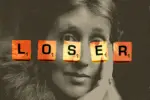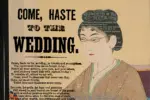From “Little Women” to “Pride and Prejudice,” many period film classics have impacted their female audience members. However, the latest Legendary Pictures and PCC Productions project distributed by Netflix, “Enola Holmes,” takes the genre’s female character role to a whole new level. With refreshing performances and a humorous script, viewers are hooked for more.
Sherlock Holmes — Sir Arthur Conon Doyle’s beloved fictional detective — has been adapted and readapted on the screen countless times, but little has been seen of his younger sister, Enola Holmes (Millie Bobby Brown). In Netflix’s on-screen adaptation of Nancy Springer’s young adult book series “The Enola Holmes Mystery,” the adolescent protagonist solves her own mystery, subverting gender roles throughout the journey.
Set in the late 19th century, the Victorian British society has young Enola’s life set out for her, but being left behind by her older brothers Sherlock (Henry Cavill) and Mycroft Holmes (Sam Clafin) allows for their mother, Edura Holmes (Helena Bonham Carter), to raise her on feminist ideals.
Unlike most Victorian ladies, Enola does not embroider, nor desire to marry — in fact, her ideal free time is spent partaking in jiu-jitsu, tennis and the making of chemical explosions with the careful guidance of her free-thinking mother.
“Mother says we can be anyone,” Enola says in the film.
Even though Sherlock had not returned home or written letters since she was very young, Enola saved newspaper clippings of every mystery her brother solved. She is also well-educated, having read every book in her library, and was constantly challenged by her mother to solve word puzzles.
However, on the morning of her daughter’s 16th birthday, Edura Holmes goes missing, leaving Enola to fend for herself — that is, until Sherlock and Mycroft return to the estate shocked to find Enola without a proper education or even a governess.
Mycroft’s plan is to enroll the young woman in a finishing school, putting Enola’s future in his hands. Of course, raised by her mother to pursue the unknown, Enola decides to follow Edura’s hidden clues leading to freedom, and hopefully Edura herself.
The decision becomes a laser-focused search, avoiding multiple men in pursuit and beating Sherlock to the mystery. Along the way, Enola meets runaway Lord Viscount Tewkesbury (Louis Partridge) and strikes up feelings, though she is often quick to prove him weak compared to her own fierceness.
Some period films have modernized or adapted their female characters, but none have done it quite so effectively as “Enola Holmes” director Harry Bradbeer. Similar to his first two seasons of the award-winning show “Fleabag,” Bradbeer invites the viewers into the experience by allowing Brown to break the fourth wall and share her thoughts with the camera.
The humorous take on a normally sophisticated setting adds to the strength of Enola’s character and speaks to the skill of Brown’s performance. It supports Enola’s individualism and refusal to obey society’s rules, showing exactly the expressive idealism women were not allowed to show in the late 19th century. Thus, feminism isn’t only shown in the actions of the character, but also in the expressions of Brown herself.
However, even though Enola seems to be a well-trained fighter and courageous detective, she is not immune to the patriarchy. But whether it manifests in the form of Mycroft’s control over her future, or the headmistress’ attempt to make her into a proper “lady,” Enola remains unbroken. She seizes the opportunity to prove that women can choose to identify with femininity for themselves. In fact, she illuminates the idea of defining one’s own choices when she opts for a corset instead of her usually masculine clothes.
In the corset scene, Brown speaks to the viewers directly: “The corset: a symbol of repression to those who are forced to wear it. But for me, who chooses to wear it — the bust enhancer and hip regulators — will hide the fortune my mother has given me. And as they do so, they will make me look like that truly unlikely thing: a lady.” With a very posh gesture, Brown dramatizes her last word, mocking the restrictive label.
Enola’s choice of dress symbolizes that women do not have to stay confined to one label. They can portray multiple identities.
Unlike most period pieces, the film isn’t satisfied with the female protagonist marrying the “right” husband, but rather embarks on Enola’s insistence to become her own person, capable of her own decisions.
On the other hand, her feelings for Tewkesbury come off as underdeveloped when mid-way through the plot her annoyance for the character abruptly becomes admiration. While romance isn’t at the forefront, and indeed would have taken away from Enola’s independence, the screenwriter could have slowed down the formation of their closeness.
Additionally, the film could have benefitted from more deep conversations such as Edith (Susie Wokoma) and Sherlock’s, when, as a Black feminist and Edura’s friend, Edith overtly addresses Sherlock’s privilege as a wealthy, white man.
There could have been more conversations between Enola and her mother, who seems to be the muse for Enola’s persistence. The bond between mother and daughter is strong, but seeing more of their relationship would have strengthened the value of womanist expression not only through blatant defiance, but of intimacy as well.
Despite these flaws, “Enola Holmes” is still enjoyable, and stands out for the male roles as well. Seeing a more complicated side of Sherlock as a man struggling to aid feminism and his family relationships is refreshing, and adds more nuance to the time period. Similarly, the attributes of Tewkesbury are not all masculine. When he runs away, Enola finds him selling flowers, a passion that would appear more “feminine.” He also seeks to vote for a more radical law at the end of the movie because of Enola’s influence. These actions greatly benefit the feminist theme, giving the female roles a bit more power in the historical narrative.
Overall, with a stacked cast and remarkable chemistry, “Enola Holmes” is one of the most animated period films yet. With something for everyone — from mystery to action scenes — there is little doubt Netflix will have to plan an “Enola Holmes” sequel.


















Sprunki began as a fan-made project on Scratch but quickly became a global sensation for creative music lovers.
I found “Enola Holmes” fascinating for how it challenges gender norms in Victorian society. Enola’s independence and wit, coupled with Millie Bobby Brown’s performance, truly make this film a refreshing take on the period genre. It’s empowering to see, @Escape Road